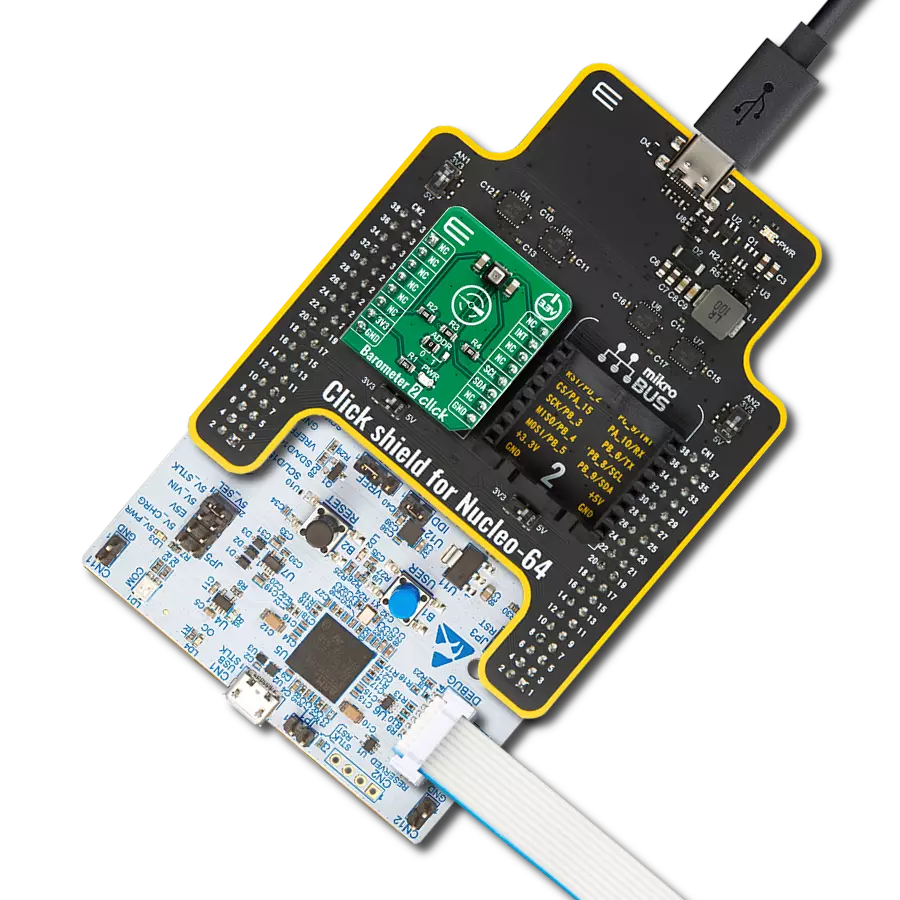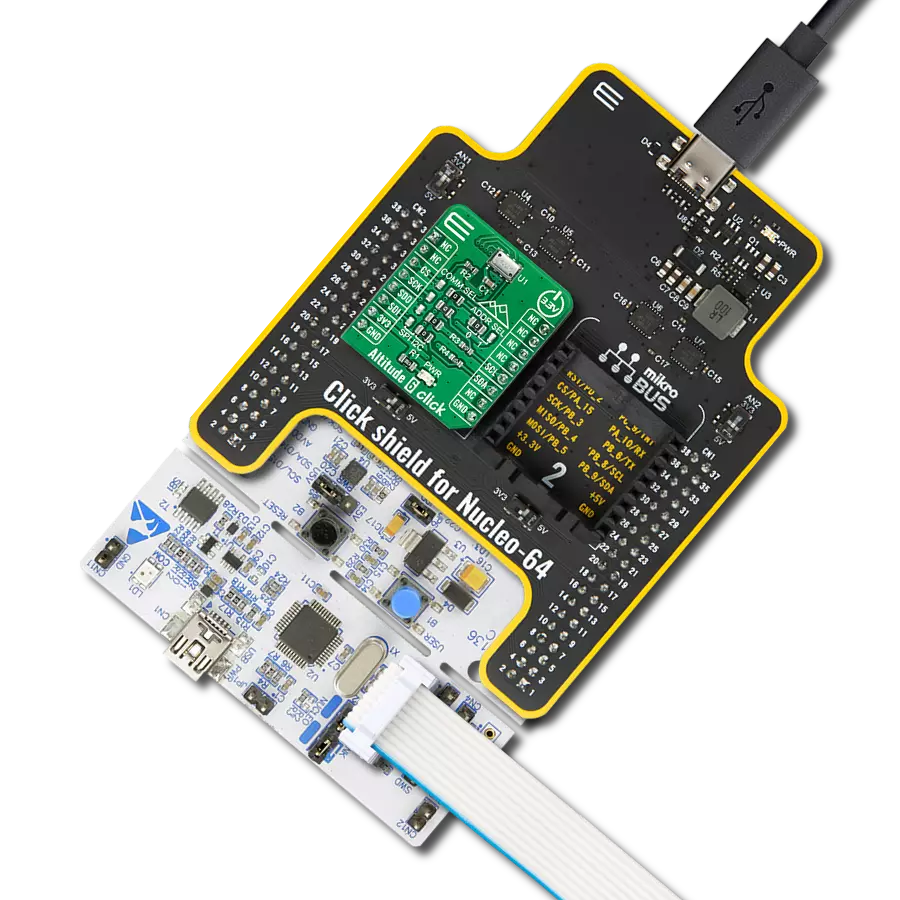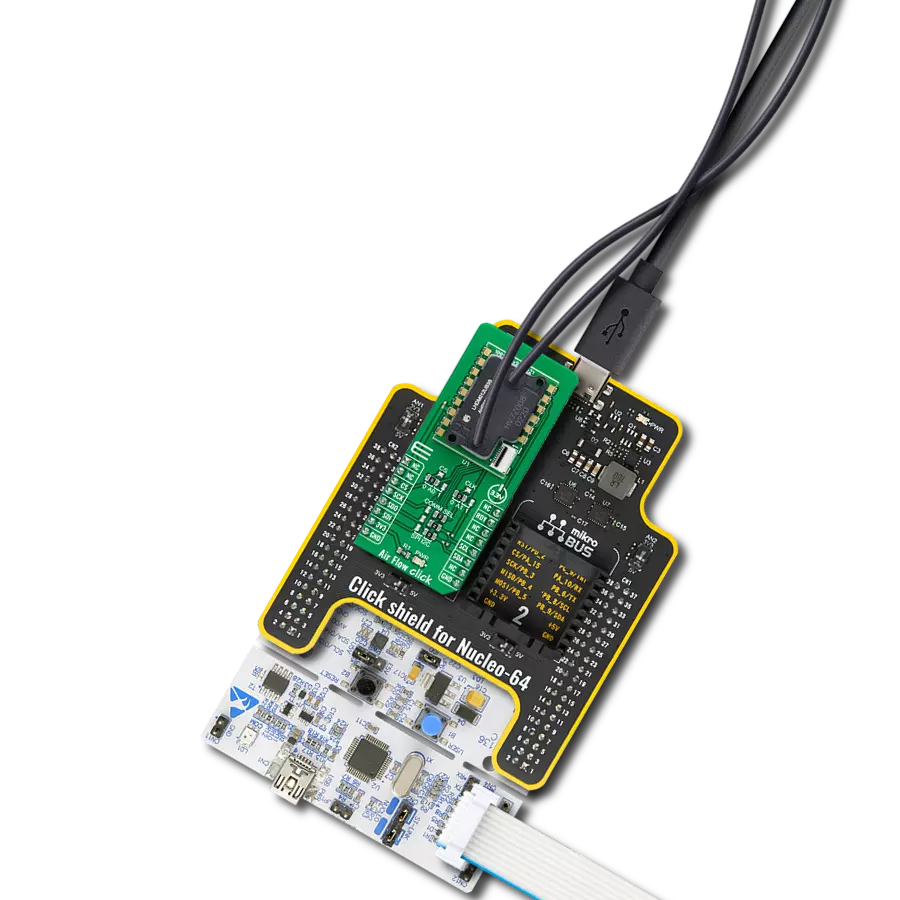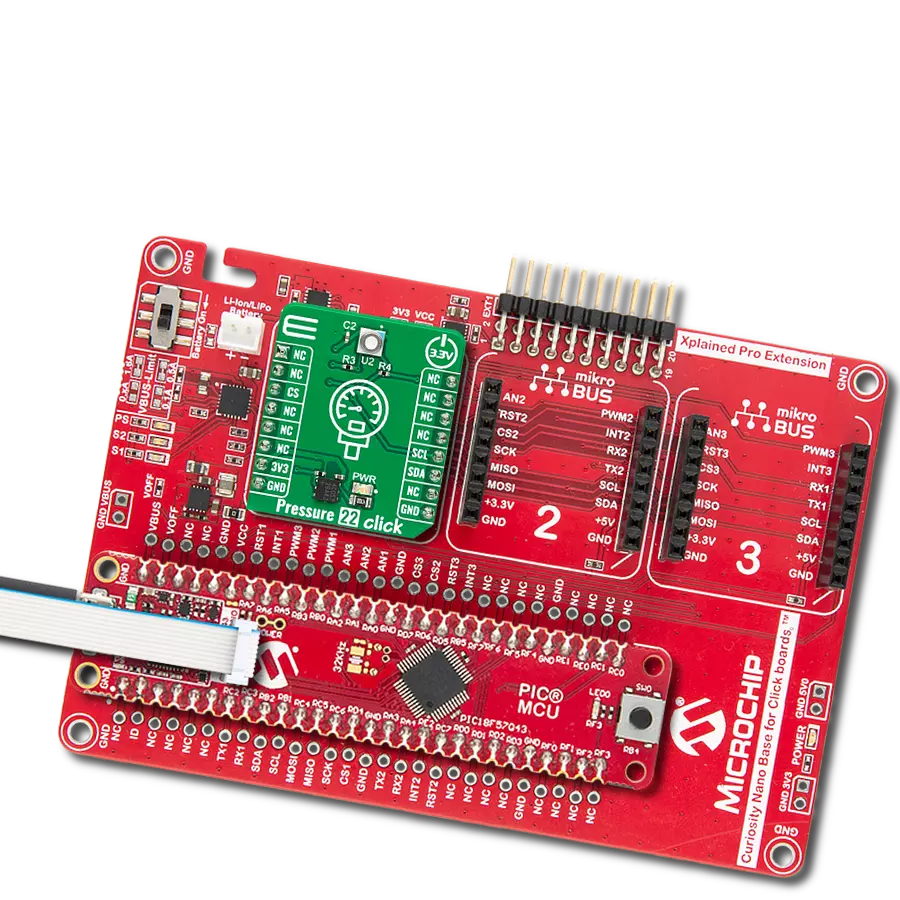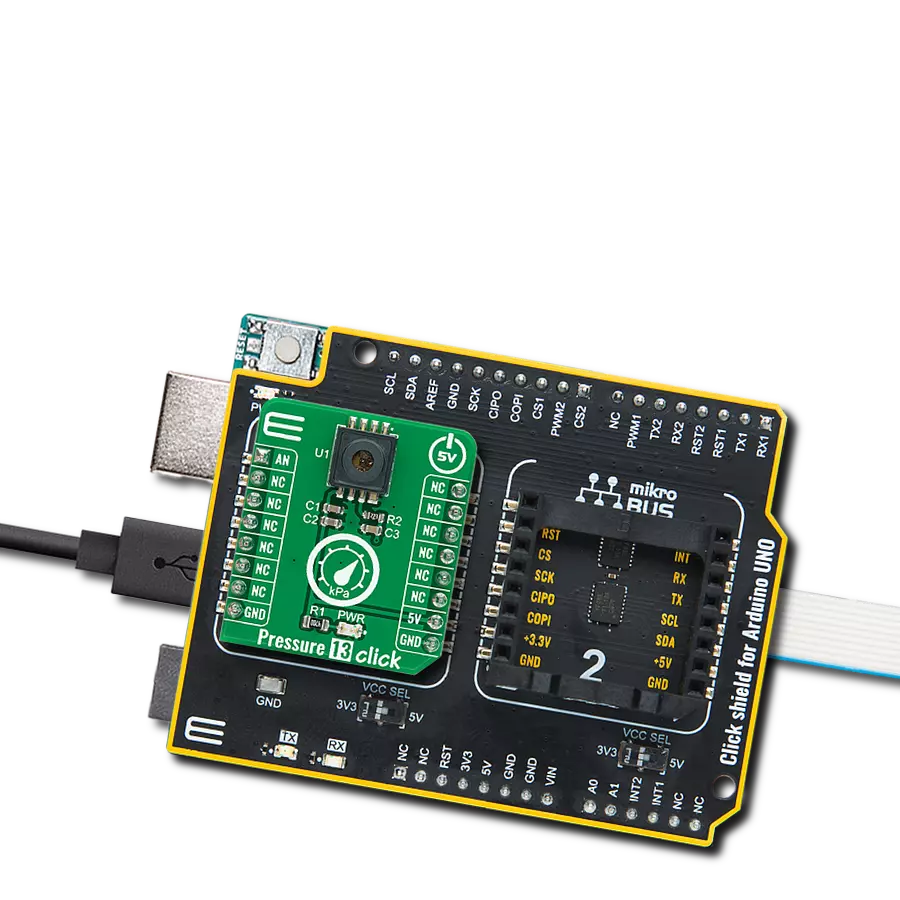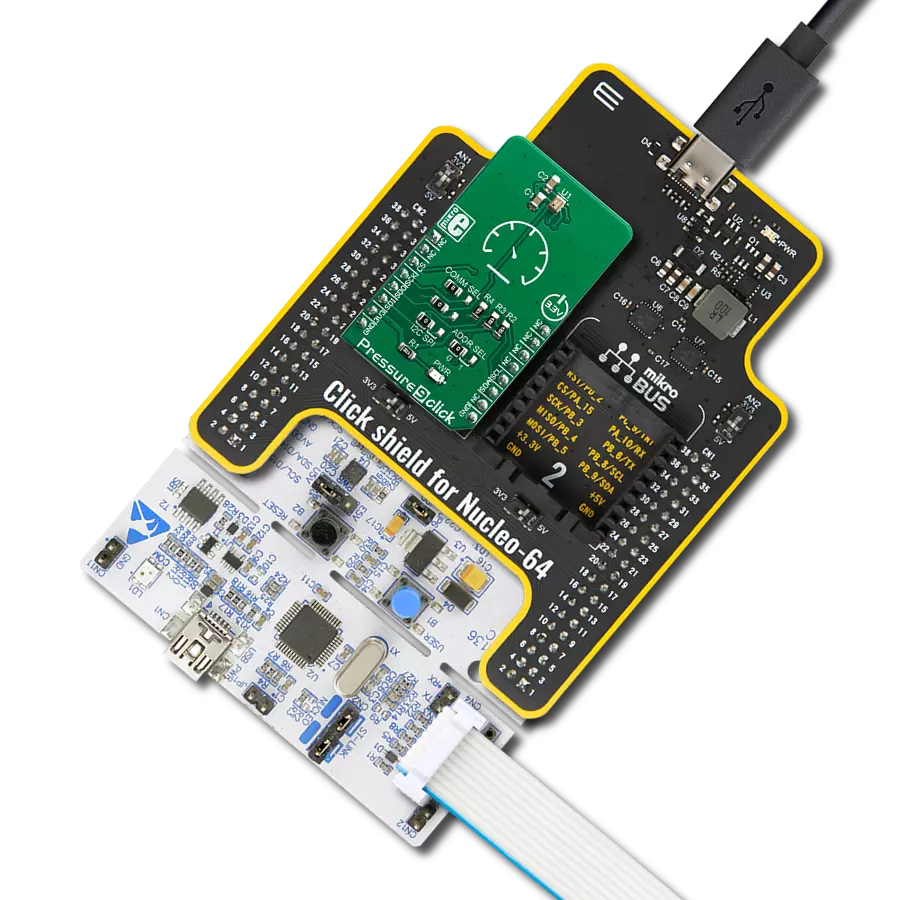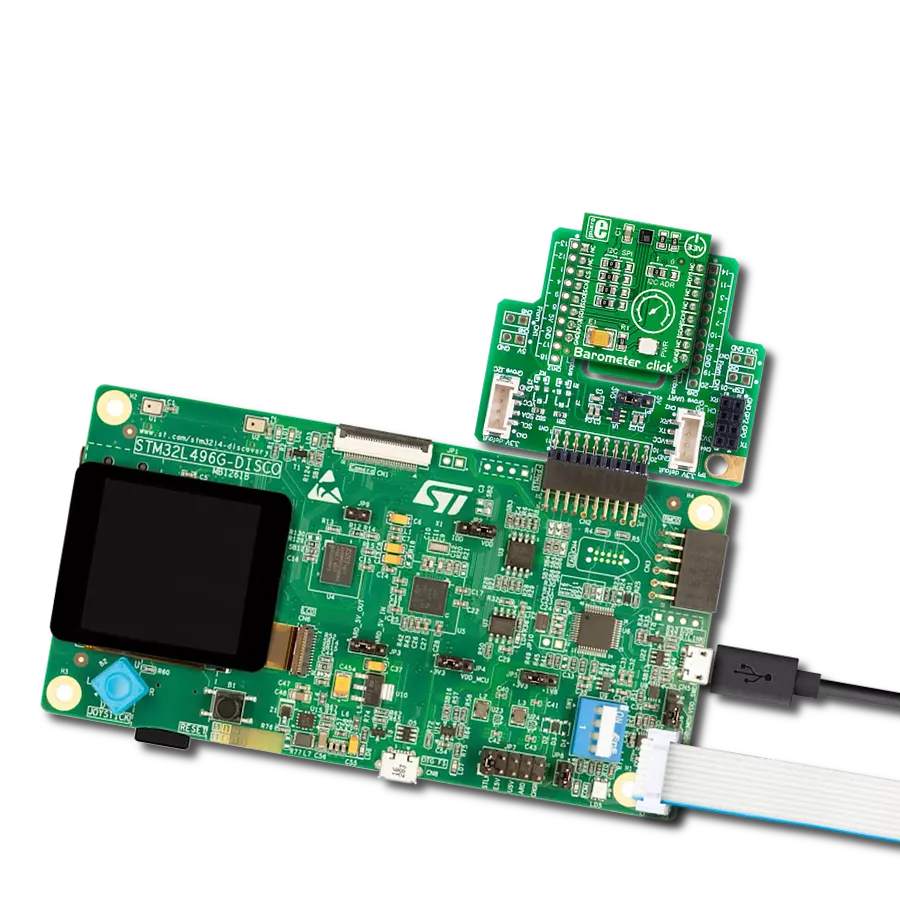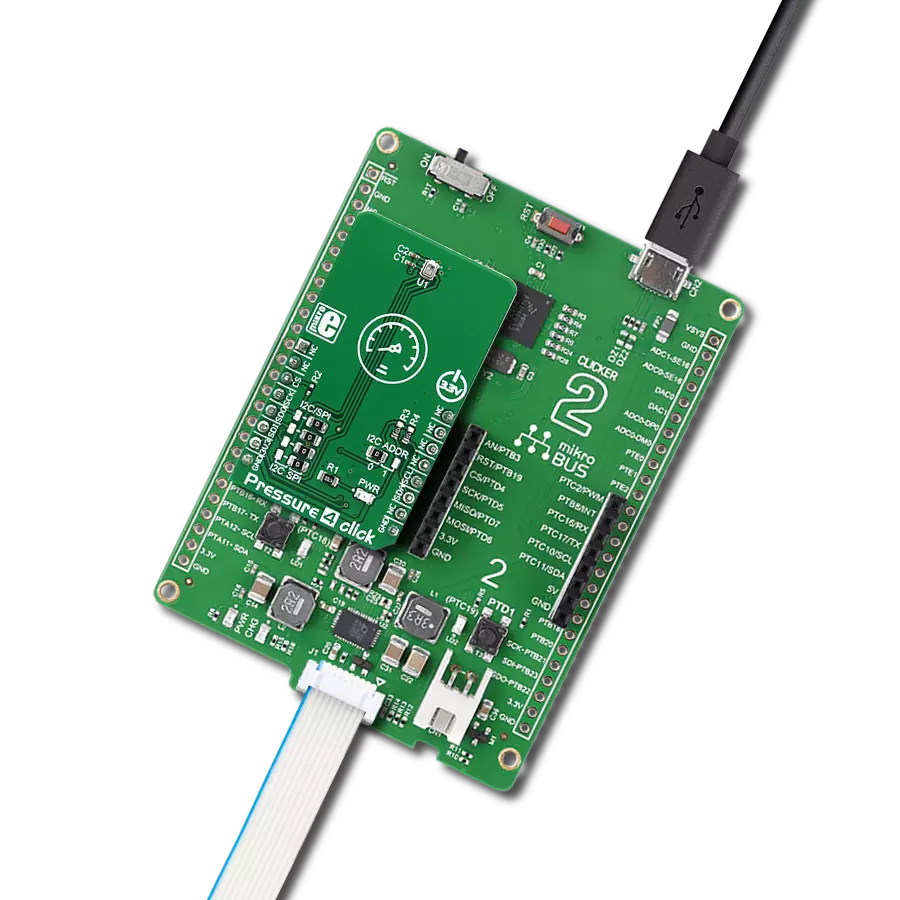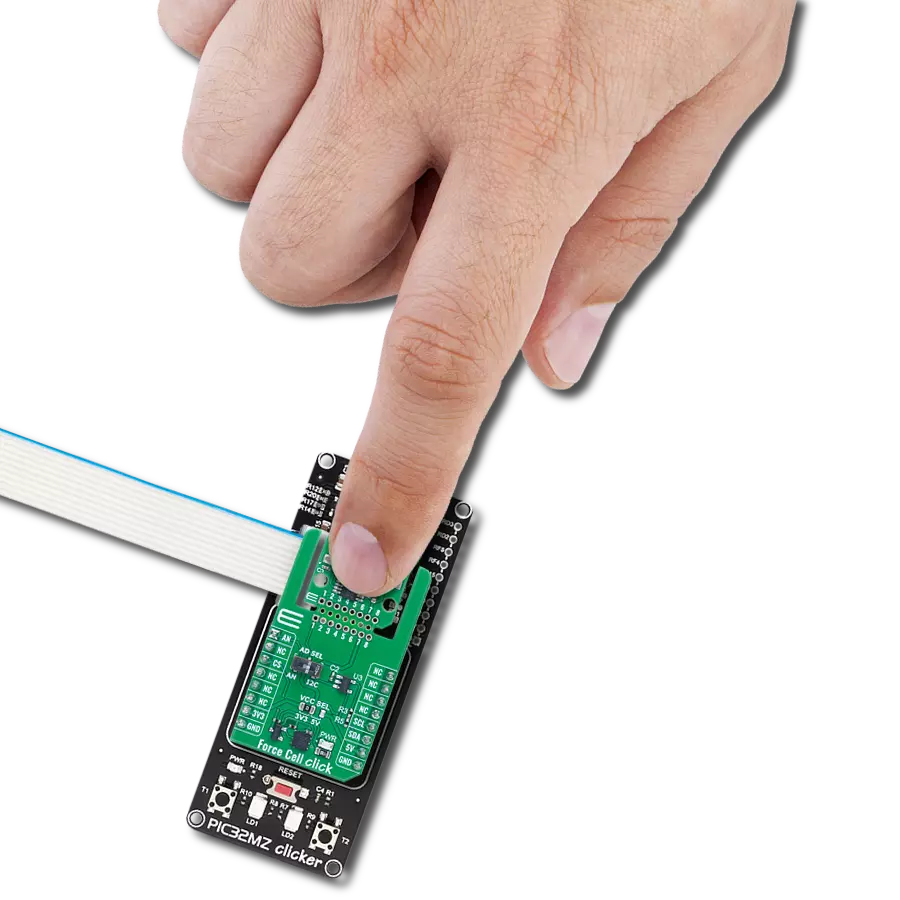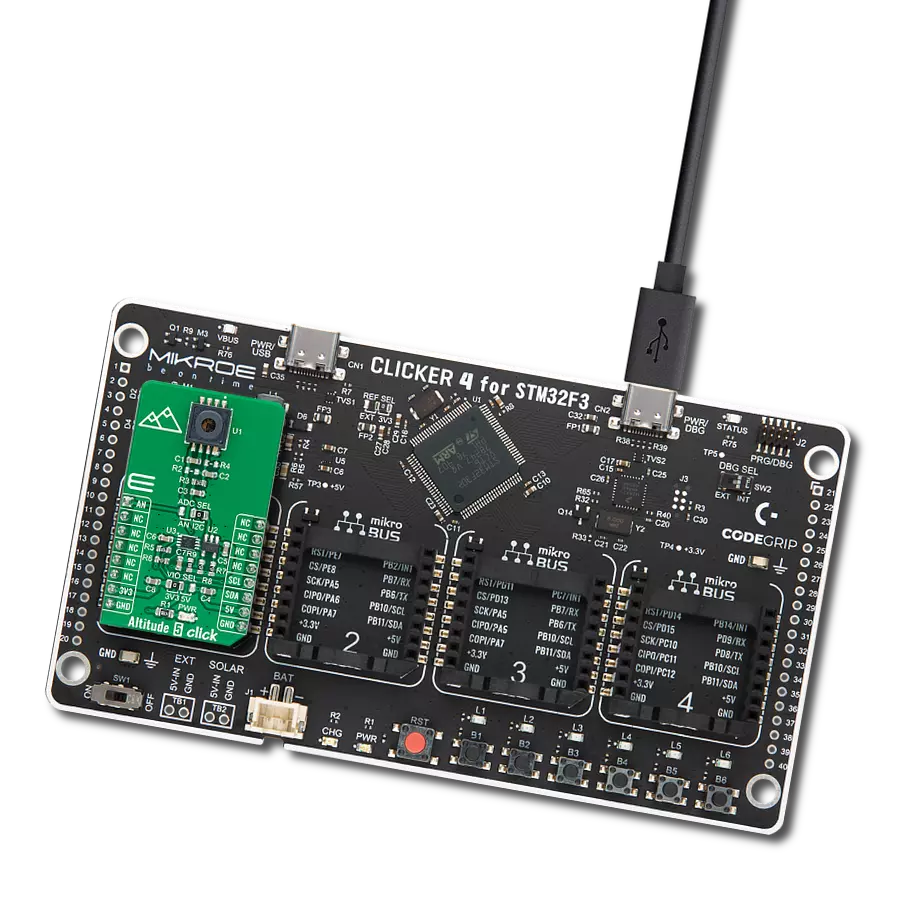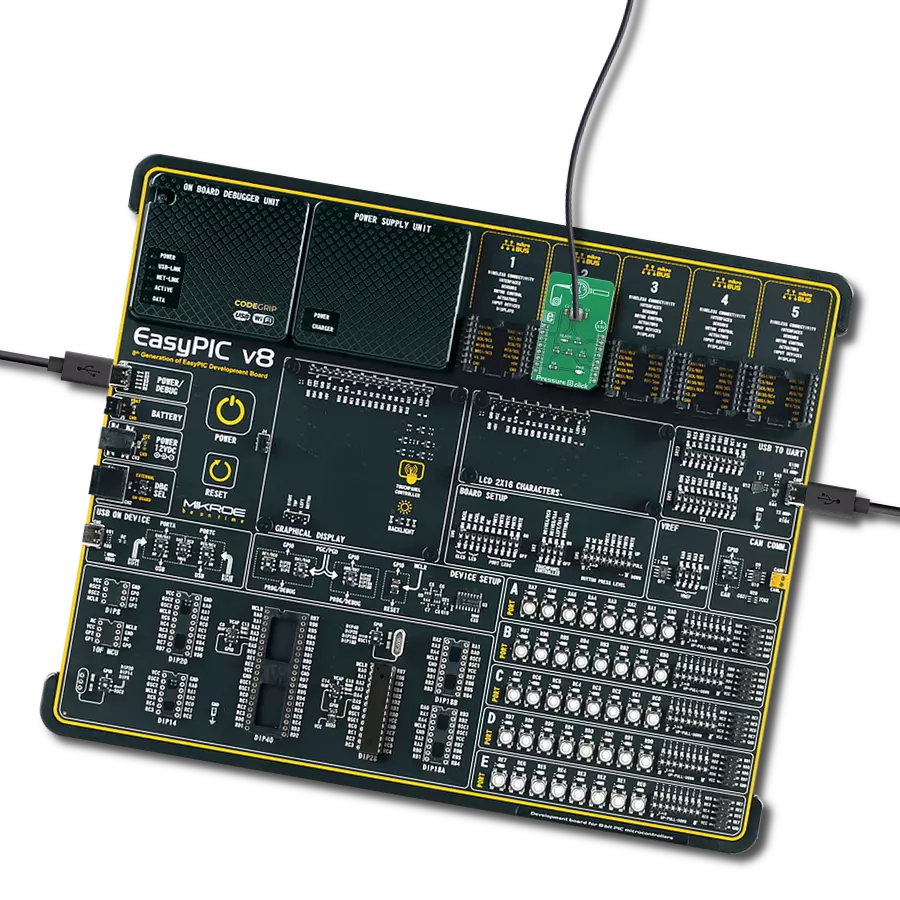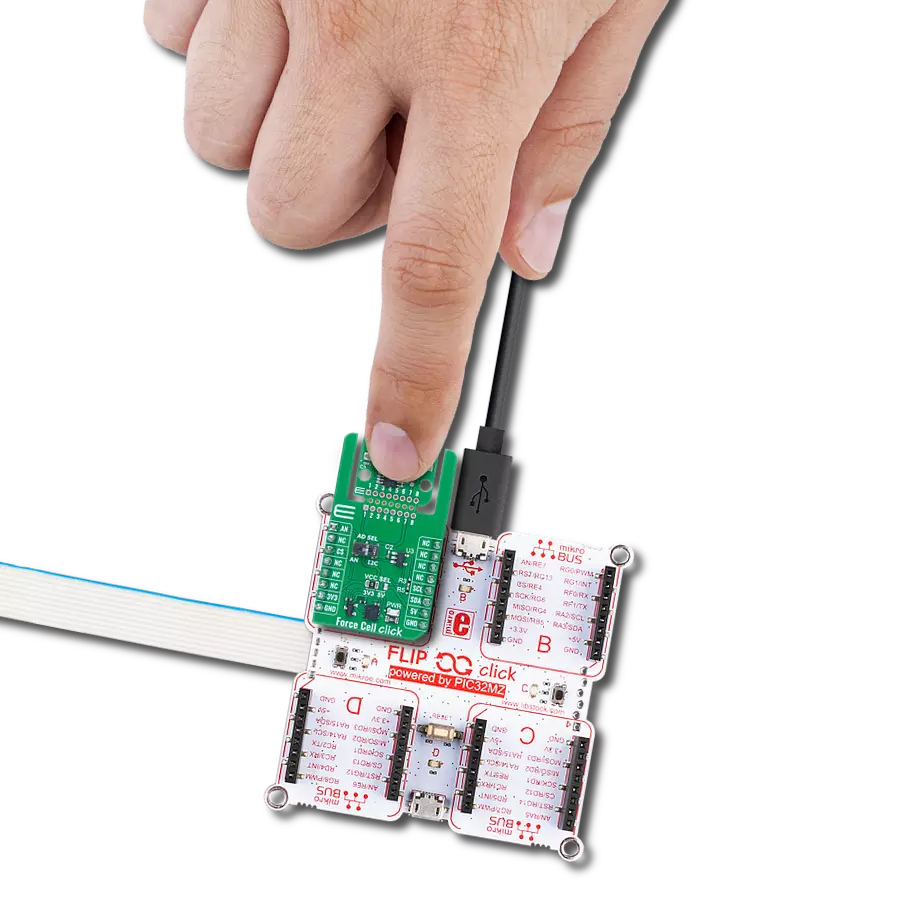In various industrial settings, this solution is employed to monitor and regulate atmospheric conditions, guaranteeing that processes and experiments are carried out under stable pressure conditions
A
A
Hardware Overview
How does it work?
Barometer 5 Click is based on the MS5637-02BA03, a high accuracy low voltage barometric and temperature sensor from TE Connectivity Measurement Specialties, to measure air pressure in a specific environment. This new sensor module generation is based on leading MEMS technology, where the sensing principle leads to very low hysteresis and high pressure and temperature signal stability. It consists of a piezoresistive sensor and a sensor interface integrated circuit. The primary function of the MS5637-02BA03 is to convert and provide the uncompensated analog output voltage from the piezoresistive pressure sensor to a 24-bit digital value for the sensor's temperature. It can measure pressure from 300mbar up to 1.2bar with an accuracy of ±2mbar over a wide operating temperature range at the
industry's lowest power. As mentioned, the MS5637-02BA03 has integrated ultra-low-power 24-bit ΔΣ ADC with internal factory-calibrated coefficients, which, alongside precise pressure value, also provides temperature value. A high-resolution temperature output allows the implementation of an altimeter/thermometer function without any additional sensor, with an altitude resolution at sea level of 13cm of air. Barometer 5 Click communicates with MCU using the standard I2C 2-Wire interface to read data and configure settings, supporting Standard Mode operation with a clock frequency of 100kHz and Fast Mode up to 400kHz. Besides, it also offers different operation modes, allowing the user to optimize for conversion speed and current consumption. Suppose the user decides not to use
our compliant library but to do software development independently. In that case, it is recommended to compensate for the non-linearity over the temperature to obtain the best accuracy over the temperature range, particularly at low temperatures. This can be achieved by correcting the calculated temperature, offset, and sensitivity by a second-order correction factor. This Click board™ can be operated only with a 3.3V logic voltage level. The board must perform appropriate logic voltage level conversion before using MCUs with different logic levels. Also, it comes equipped with a library containing functions and an example code that can be used as a reference for further development.
Features overview
Development board
Nucleo-64 with STM32G071RB MCU offers a cost-effective and adaptable platform for developers to explore new ideas and prototype their designs. This board harnesses the versatility of the STM32 microcontroller, enabling users to select the optimal balance of performance and power consumption for their projects. It accommodates the STM32 microcontroller in the LQFP64 package and includes essential components such as a user LED, which doubles as an ARDUINO® signal, alongside user and reset push-buttons, and a 32.768kHz crystal oscillator for precise timing operations. Designed with expansion and flexibility in mind, the Nucleo-64 board features an ARDUINO® Uno V3 expansion connector and ST morpho extension pin
headers, granting complete access to the STM32's I/Os for comprehensive project integration. Power supply options are adaptable, supporting ST-LINK USB VBUS or external power sources, ensuring adaptability in various development environments. The board also has an on-board ST-LINK debugger/programmer with USB re-enumeration capability, simplifying the programming and debugging process. Moreover, the board is designed to simplify advanced development with its external SMPS for efficient Vcore logic supply, support for USB Device full speed or USB SNK/UFP full speed, and built-in cryptographic features, enhancing both the power efficiency and security of projects. Additional connectivity is
provided through dedicated connectors for external SMPS experimentation, a USB connector for the ST-LINK, and a MIPI® debug connector, expanding the possibilities for hardware interfacing and experimentation. Developers will find extensive support through comprehensive free software libraries and examples, courtesy of the STM32Cube MCU Package. This, combined with compatibility with a wide array of Integrated Development Environments (IDEs), including IAR Embedded Workbench®, MDK-ARM, and STM32CubeIDE, ensures a smooth and efficient development experience, allowing users to fully leverage the capabilities of the Nucleo-64 board in their projects.
Microcontroller Overview
MCU Card / MCU
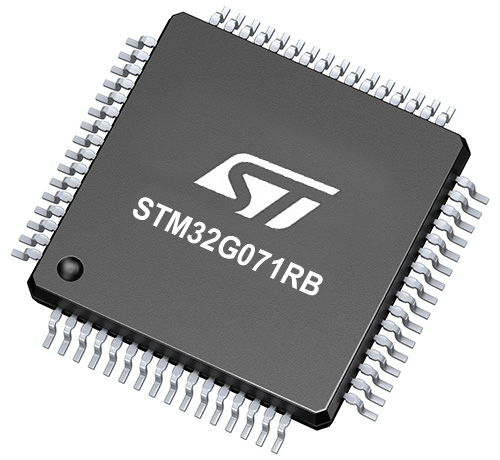
Architecture
ARM Cortex-M0
MCU Memory (KB)
128
Silicon Vendor
STMicroelectronics
Pin count
64
RAM (Bytes)
36864
You complete me!
Accessories
Click Shield for Nucleo-64 comes equipped with two proprietary mikroBUS™ sockets, allowing all the Click board™ devices to be interfaced with the STM32 Nucleo-64 board with no effort. This way, Mikroe allows its users to add any functionality from our ever-growing range of Click boards™, such as WiFi, GSM, GPS, Bluetooth, ZigBee, environmental sensors, LEDs, speech recognition, motor control, movement sensors, and many more. More than 1537 Click boards™, which can be stacked and integrated, are at your disposal. The STM32 Nucleo-64 boards are based on the microcontrollers in 64-pin packages, a 32-bit MCU with an ARM Cortex M4 processor operating at 84MHz, 512Kb Flash, and 96KB SRAM, divided into two regions where the top section represents the ST-Link/V2 debugger and programmer while the bottom section of the board is an actual development board. These boards are controlled and powered conveniently through a USB connection to program and efficiently debug the Nucleo-64 board out of the box, with an additional USB cable connected to the USB mini port on the board. Most of the STM32 microcontroller pins are brought to the IO pins on the left and right edge of the board, which are then connected to two existing mikroBUS™ sockets. This Click Shield also has several switches that perform functions such as selecting the logic levels of analog signals on mikroBUS™ sockets and selecting logic voltage levels of the mikroBUS™ sockets themselves. Besides, the user is offered the possibility of using any Click board™ with the help of existing bidirectional level-shifting voltage translators, regardless of whether the Click board™ operates at a 3.3V or 5V logic voltage level. Once you connect the STM32 Nucleo-64 board with our Click Shield for Nucleo-64, you can access hundreds of Click boards™, working with 3.3V or 5V logic voltage levels.
Used MCU Pins
mikroBUS™ mapper
Take a closer look
Click board™ Schematic

Step by step
Project assembly
Software Support
Library Description
This library contains API for Barometer 5 Click driver.
Key functions:
barometer5_get_data- Barometer 5 get data functionbarometer5_get_pressure- Barometer 5 get pressure data functionbarometer5_get_temperature- Barometer 5 get temperature data function
Open Source
Code example
The complete application code and a ready-to-use project are available through the NECTO Studio Package Manager for direct installation in the NECTO Studio. The application code can also be found on the MIKROE GitHub account.
/*!
* @file main.c
* @brief Barometer5 Click example
*
* # Description
* This library contains API for Barometer 5 Click driver.
* The demo application reads and calculate temperature and pressure data.
*
* The demo application is composed of two sections :
*
* ## Application Init
* Initializes I2C driver and log UART.
* After driver initialization the app set default settings.
*
* ## Application Task
* This is an example that demonstrates the use of the Barometer 5 Click board™.
* In this example, display the Pressure ( mBar ) and Temperature ( degree Celsius ) data.
* Results are being sent to the Usart Terminal where you can track their changes.
*
* @author Nenad Filipovic
*
*/
#include "board.h"
#include "log.h"
#include "barometer5.h"
static barometer5_t barometer5;
static log_t logger;
void application_init ( void )
{
log_cfg_t log_cfg; /**< Logger config object. */
barometer5_cfg_t barometer5_cfg; /**< Click config object. */
/**
* Logger initialization.
* Default baud rate: 115200
* Default log level: LOG_LEVEL_DEBUG
* @note If USB_UART_RX and USB_UART_TX
* are defined as HAL_PIN_NC, you will
* need to define them manually for log to work.
* See @b LOG_MAP_USB_UART macro definition for detailed explanation.
*/
LOG_MAP_USB_UART( log_cfg );
log_init( &logger, &log_cfg );
log_info( &logger, " Application Init " );
// Click initialization.
barometer5_cfg_setup( &barometer5_cfg );
BAROMETER5_MAP_MIKROBUS( barometer5_cfg, MIKROBUS_1 );
if ( I2C_MASTER_ERROR == barometer5_init( &barometer5, &barometer5_cfg ) )
{
log_error( &logger, " Communication init." );
for ( ; ; );
}
if ( BAROMETER5_ERROR == barometer5_default_cfg ( &barometer5 ) )
{
log_error( &logger, " Default configuration." );
for ( ; ; );
}
log_info( &logger, " Application Task " );
log_printf( &logger, "---------------------------\r\n" );
Delay_ms ( 100 );
}
void application_task ( void )
{
static float temperature;
static float pressure;
if ( barometer5_get_data( &barometer5, &temperature, &pressure ) == BAROMETER5_OK )
{
log_printf( &logger, " Pressure : %.2f mbar \r\n", pressure );
log_printf( &logger, " Temperature : %.2f C \r\n", temperature );
log_printf( &logger, "---------------------------\r\n" );
}
Delay_ms ( 1000 );
}
int main ( void )
{
/* Do not remove this line or clock might not be set correctly. */
#ifdef PREINIT_SUPPORTED
preinit();
#endif
application_init( );
for ( ; ; )
{
application_task( );
}
return 0;
}
// ------------------------------------------------------------------------ END
Additional Support
Resources
Category:Pressure



















